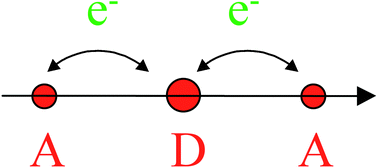Holstein–Peirls–Hubbard trimer as a model for quadrupolar two-photon absorbing dyes†
Abstract
The linear and nonlinear optical properties of a Donor–Acceptor–Donor system have been investigated by using a two-electron three-point-site model system. Some basic features of electron correlations are included in the model by means of a bi-electronic density


 Please wait while we load your content...
Please wait while we load your content...